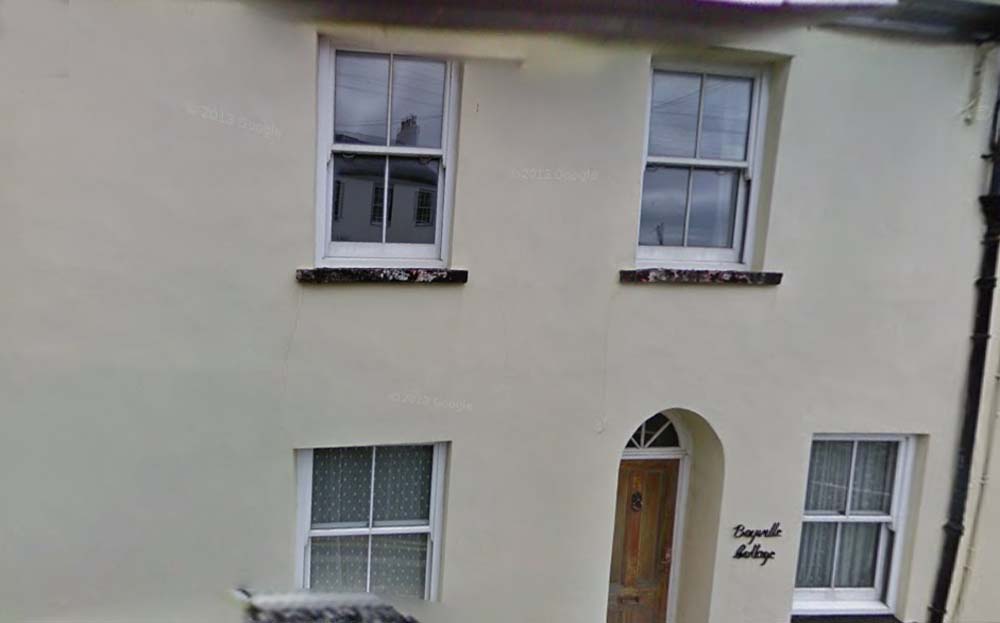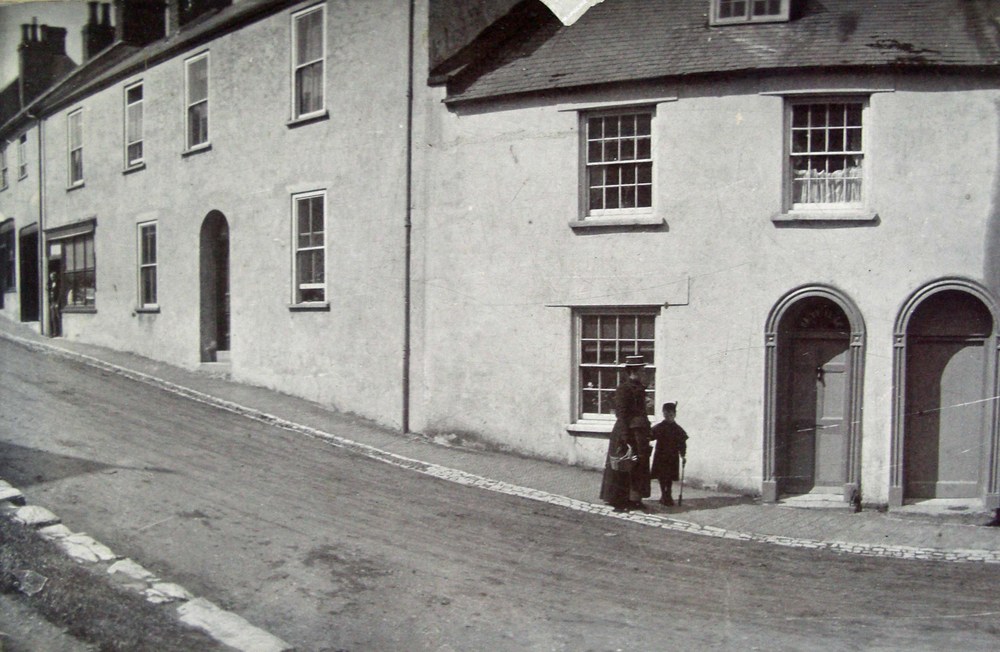Bayville House
Scroll down to find out more. Click on images or Home to return back.


Bayville House |
|
Scroll down to find out more. Click on images or Home to return back. |
|
 |
|
 |
|
| "Bayville" originally had two doors, The right hand one led into the garden, which is larger than those of the previous cottages. In the late 1870s it was occupied by William Holly, agent for the London and South-Western Railway Company. His horses were-Kept in the stables where "Saram Cottage" now stands, belonging to "Charmouth House", then owned by his father, George Holly. Later he bought the Axminster Bus and went to live in "Wistaria". The house belonged to and was occupied by Ernest and Mrs. Hutchings, At one time an Axminster chemist lived there. As you turn the corner of the street the shop in 1870 belonged to Wilson, a grocer. There is a cellar beneath the shop in which he kept his goods.A new and larger window has been put in lately, which is considerably lower, and the cellar door bricked up. One day Wilson had some plums for sale in a basket outside the shop. They presented a tempting sight or so thought a young boy named Fred Penny, who helped himself as he passed by. Wilson, unfortunately for Fred, saw the deed and was in wait for him on his return, Freddie continued his way home a sore and sadder boy" (Mr Penny used to relate this story with great gusto many years later). When Wilson left Thomas Tarr bought the house for his two daughters who were dressmakers. The younger daughter died and the other became a news paper agent, following Miss Welman of "Rupert House". She also sold toys and stationery. Enock, infant school teacher, was one of many of Miss Tarr`s lodgers. Between the wars Miss Tarr was one of the personalities in the village. The comer was known as Miss Tarr` s Corner. She was a most regular churchgoer and staunch Conservative. She refused to sell "The Daily Herald" until the news agency threatened to stop her supplies. As she grew old her many friends became anxious about her until one morning in January 1939 it was noticed that she was not in the shop. Her companion, Miss Martin, was also old; both were found helpless in bed. Miss Tarr never recovered and died shortly afterwards and Miss Martin went to live with friends. The executors found the house in a marvellous state of dirt and discomfort. For years her unsold papers were never returned but thrown into a passage. Her demands for Income Tax returns were unanswered and littered the floor of her sitting room with many unopened letters. The drawers of the counter were lined with newspaper more than 20 years old. Old prints of Charmouth were found where they had been put many years ago. The contents of the shop were mostly out of date. The kitchen quite unusable and the scullery completely blocked with spiders` webs thickly coated with soot Upstairs many records of Charmouth known to Miss Tarr and her father came to light lying about, (especially those concerning Charmouth House, but her bedroom was beyond description. By the side of her bed were a candlestick and a pyramid of spent thrown down on the floor and never cleared. How she escaped a fire was a marvel. The attic above had not been cleaned for years. The floor was ankle-deep in paper; volumes of Mr. Tarr's diary, which proved to be uninteresting; handbills including the report of the village hospital already mentioned, and broken toys. It was a sad and depressing for those who cleared and cleaned the house and who had known Miss Tarr in former years. At the sale which followed the premises were bought by Charlie How, The house was converted into two flats and another staircase added by cutting off part of the shop; his daughter opened a lady's hairdresser establishment. It then became an Antique shop. Unfortunately one of the owners was killed in Lyme by a runaway lorry and the premises were bought by Col. A.M. Askwith, who opened it for the sale of fancy goods from the Mediterranean. It is interesting to note the step of the shop, the top of the Church Tower parapet and the of Stonebarrow farm are all the same level. | |
|
|